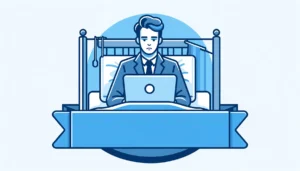Using technology to keep a workforce fit for work
- 5 Min Read
Mike Blake, Wellbeing Lead, Willis Towers Watson, examines at the changing role of technology in maintaining worker wellbeing.
- Author: Mike Blake
- Date published: Apr 9, 2019
- Categories

Technology keeping employees fit for work
When the NHS was founded in 1948, Aneurin Bevan branded it “the most civilised achievement of modern Government” – and today, over 64.6 million people in the UK are cared for by our acclaimed NHS.
 For around 90% of patients their first interaction with the NHS is with a GP. However, getting to see their GP can be take time.
For around 90% of patients their first interaction with the NHS is with a GP. However, getting to see their GP can be take time.
A recent NHS patient survey showed that about one in five patients had to wait one week or more before they could see or even speak to someone at their local GP surgery. This is bad news for employers who want their workforce fit for work, sooner rather than later.
But could this explain why ‘presenteeism’ has more than tripled since 2010, according to a recent CIPD survey?
The complexity of patients’ problems and chronic illness has increased and there has been a notable and worrying 10 per cent rise in ‘multimorbidity’ – when patients have two or more long-term conditions.
NHS England claims that this is currently one of the greatest challenges it faces, a challenge largely being managed by already busy GP surgeries.
So, can technology help lighten the GP load? Could tech innovation reduce the burden on the NHS, which deals with over 1 million patients every 36 hours? Will tech-led counselling help alleviate the UK’s mental health crisis?
Technology to beat the blues
Working at illness-induced sub-par levels has a detrimental impact on the individual’s quality and volume of work – which in turn affects overall business performance and productivity.
Depression is another of the UK’s biggest and debilitating health concerns – approximately one in four people in the UK will experience a mental health problem each year (NHS). From a business perspective, this equates to 25.8 lost working days annually for each individual caused by stress, depression or anxiety, according to the Health and Safety Executive.
By encouraging employees to look for alternatives when the doctor is not on call and the councillor has a lengthy waiting list, businesses could pave the way for a much healthier, happier and ultimately more productive workforce.
Here we look at ways technology can help your employees DIY when they can’t NHS.
Anytime, anywhere telemedicine
Now there’s no excuse for being unable to get time off work or get transport to your GP surgery. You can virtually see them from the comfort of your own home or desk. In fact 41% of workers aged 18-24 would rather use telemedicine services than visit their GP practice in person, according to the latest Health and Benefits Barometer research.
The demand for telemedicine in the UK is expected to grow at a rapid pace driven by ‘live your life online’ millennials and an ageing population who seek the convenience of home intervention.
There is also a growing number of healthcare information technology (HIT) players emerging with interest and investments from both public and private sectors in this high profile domain.
The emergence of 5G will also drive the future accessibility of telemedicine, with researchers suggesting that outsourcing of everyday GP consultations could extend to specialist services, such as psychiatry and neurology.
Artificial intelligence (AI) will lend a sympathetic ear
It’s not only physical illness benefiting from technology, but mental illness is also privy to the tech-med revolution. With its sophisticated use of algorithms, AI is set to revolutionise the decentralisation and dehumanisation of counselling services.
The newest of these tech-based treatments is an artificially intelligent chatbot or virtual councillor that works through two-way text dialogue. This interactive app embraces the principles of cognitive-behavioural therapy, which is one of the most heavily researched and respected clinical approaches to treating depression.
In a world where we are well versed in texting and typing, it seems only natural to extend this form of interaction to mental health support and advice.
AI-driven counselling can help businesses put employees’ own behaviours and preferences at the heart of benefits packages. After all, sometimes it’s not good to talk. It’s good to type.
Know what employees need before they do
Big data is big news right now. According to DOMO, over 2.5 quintillion bytes of data are created every single day and over the last two years alone, 90% of the data in the world was generated.
Most HR professionals know instinctively that keeping staff healthy will positively benefit the business bottom line. Now, the dynamic and sophisticated use of big data could help them prove it.
The wealth of data garnered from established and emerging technologies can help generate invaluable insights into employee health and wellbeing needs.
Such insights can help feed into strategies and help formulate health benefits packages. Get savvy with data and convert into actionable and measurable deliverables. Identify emerging trends in your workforce – from obesity to stress and anxiety – prevention is better and more cost-effective than cure after all.
Health technology making the unimaginable imaginable
Truly remarkable medical discoveries and technological advances are revolutionising healthcare making it unrecognisable from where we were just five years ago. Self-monitoring health tracking wearables and remote diagnostics will undoubtedly soon be archaic and obsolete, such is the pace of innovation.
The future of healthcare almost reads like the script from a sci-fi film. From gene editing serums that eradicate inherited conditions to digital avatars that replicate humans on a cellular level to simplify organ printing; from memory editing that erases addictions to reversing paralysis using carbon nanotubes and synthetic nerve cells; from messenger RNA molecules that can be inhaled to treat cystic fibrosis to progesterone cocktails to help regenerate limbs.
It seems the healthcare and wellbeing opportunities know no technology boundaries. Think the unthinkable and it will happen one day.
These developments will undoubtedly lead to the proliferation of remote care – faceless, voiceless treatment will be as commonplace as having groceries delivered by drone and unpacked by a robot. And who knows what the future holds, you could even be married to that robot one day.









